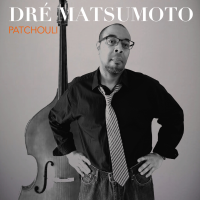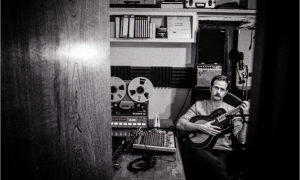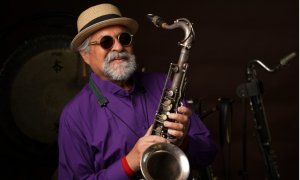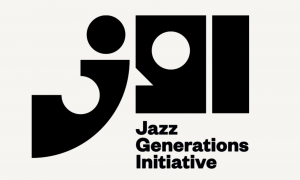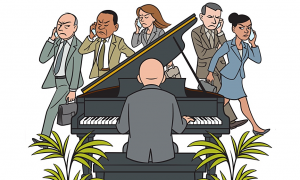In Part 3 of my five-part interview series with George, the fabled producer talks about the 10-inch LP's development, signing Miles Davis in 1955, and the deal he worked out to get the trumpeter out of his Prestige contract:
JazzWax: You were at Columbia at the dawn of the LP era, yes?
George Avakian: That's right. Columbia introduced the LP in the spring of 1948. But jazz was really an afterthought and came later. Columbia invented the 12-inch LP for classical music, which ran long and had required multiple 78-rpms to fit all of the music of a symphony. The LP reduced the cost, weight and inconvenience of 78-rpm albums. The 10-inch LP was actually created by Columbia for pop music.
JW: Why?
GA: Classical record albums were popular with listeners who could afford them. The next most lucrative genre was pop, so it made business sense that pop would receive the LP treatment next. Since pop songs were relatively short, the thinking at first was that the genre didn't really need a 12-inch disc.
JW: There was a royalty issue as well, yes?
GA: Yes. A 10-inch LP meant fewer tracks--and fewer royalties to pay, which meant lower overhead. There were no royalties to pay on classical recordings. Once we decided to move forward with the 10-inch LP, we needed to create a complete catalog of pop LPs in a hurry. That was my job. I developed around 100 titles relatively quickly.
JW: What about jazz?
GA: There really wasn't much of a strategy with the 10-inch LP for jazz at Columbia. At first, we just transferred the masters of 78-rpm discs onto the longer-playing discs. So the early 10-inch jazz LPs were just a collection of previously released 78-rpm singles. We didn't start recording jazz for the 10-inch LP until later.
JW: Many people assume you were a jazz producer.
GA: That right--and it wasn't the case. You have to remember that I was head of the pop music department. One day I came back from lunch and my secretary said a man from Europe had come in looking for me. She said he was very disappointed because he saw a sign on my door that said “Popular Album Department." My secretary told me that the man had said, “I thought Mr. Avakian was in charge of the Jazz Department." She had to explain to him that such a department didn't exist at the label.
JW: When did you start to think about Miles Davis as a Columbia artist?
GA: When I heard Miles at the Newport Jazz Festival in 1955. That was where I had made the decision that I was going to sign him to Columbia, despite the fact that he had been a junkie and all that.
JW: What did you hear at Newport?
GA: I heard and saw jazz's first modern superstar. What struck me was that Miles was the best ballad player since Louis Armstrong. I was convinced that his ballad playing would appeal to the public on a very large scale. While his bebop playing had established his reputation among musicians and jazz bands, I knew that bebop would never connect on a large scale.
JW: Why not?
GA: It was ingenious music but far too complicated for the average ear and too hard for the mass market to follow the melodies.
JW: So Davis, to your ear, was a melody player?
GA: Absolutely. It's really Miles' melodic playing that put him across with the public on a wide scale. That happened first with our album 'Round About Midnight in 1956 and on an even bigger scale with Miles Ahead in 1957, which sold 1 million copies and established him internationally.
JW: But he was more than a jazz musician in your eyes?
GA: Yes. I viewed him as a much bigger figure, a pop-jazz star, if you will. But there was a problem. A few years earlier, when he was hung up on junk, I was astounded to find that he had worked live in front of the public only four to five weeks out of the year. No one wanted to hire him. He was too irresponsible and his habit was ruining him. He'd cancel out at the last minute, so club owners saw him as absolute poison.
JW: Why was playing live so important?
GA: To be a star on the level I had in mind, Miles had to perform constantly and consistently, not just a few weeks a year. Back then, before TV, cell phones and the Internet, the way you promoted yourself was in front of live audiences. If audiences liked you, they told others and bought your records. Clubs were affordable and convenient places to hear and see jazz musicians.
JW: What was the turning point for you?
GA: When Miles kicked his habit on his own and convinced me that he was going to stay off junk. After I heard him that day at Newport, my brother, who was standing with me, said, “George, stop worrying about signing Miles. You can go ahead. He's back. You can hear that he's back. You've been listening to him." [Photo of Miles Davis' hand by Irving Penn]
JW: So we have your brother partly to thank for Miles Davis on Columbia.
GA: That's right [laughs].
JW: You waited just a bit though before signing him.
GA: I wanted to hear how consistent he was. So I went to hear him on Monday nights at Birdland. The club had an open mike night on that day, which meant musicians who weren't on the bill could just show up and play.
JW; How was he?
GA: Miles was playing beautifully. I was convinced he was clean. I told him to come in to talk to me about the contract he had been bugging me about for some time.
JW: What did you tell him when you met?
GA: The first thing I said was, “Look, you've got to get a group together and hold onto the musicians." Consistency was important then. You wanted musicians who knew the material and knew how to interact with each other. That's where the magic was. But retaining the same players also was important for audiences. When you built and promoted a group, that group was what audiences wanted to see and hear. [Photo of Miles Davis by Don Hunstein]
JW: But Davis in 1956 was signed to Prestige Records.
GA: That's right. Miles' idea was I should record him and hold the Columbia releases until his Prestige contract expired. By then, he said, he would be even better known and we could release the Columbia recordings right away. His point was that we'd get the publicity going instantly instead of waiting the customary three months for an album to be marketed. [Photo of Miles Davis by Esmond Edwards/CTSImages.com]
JW: But you had a different idea.
GA: We had the same concept in mind but I had a slightly different twist on it.
JW: Which was?
GA: I wanted to sign Miles right away--before he got bigger. Which meant he had to get out of his Prestige contract. Or wrap it up faster. He still owed the label four albums.
JW: What did you come up with?
GA: I decided that Miles should record enough material to complete the remaining four Prestige albums, to finish up his deal with the label right away. Prestige's owner Bob Weinstock [pictured] knew that Miles was going to sign with Columbia, so there was no real expectation that he would re-sign with Prestige. It was just a question of whether that contract ended sooner or later.
JW: How did you make such an arrangement worthwhile to Weinstock?
GA: By recording all four album's worth of material at once [in May and October 1956], Prestige would have an inventory it could release--either one at a time or all at once--starting when our first album came out. Bob immediately saw the value.
JW: And what was that value?
GA: That the Prestige releases, with the exact same group, would be riding Columbia's marketing coattails. As I spent money to promote Miles' Columbia records, Bob would be able to release his Prestige albums simultaneously. He would wind up with greater sales than if Miles was still with Prestige all that time. In other words, he'd be getting a free promotional ride for his releases.
JW: Quite a brilliant move on your part.
GA: Look, I could have bought out Weinstock, but that's not what I wanted to do. I didn't want to hurt Weinstock, who was a pretty decent guy. This approach would help both of us and Miles.
JW: What did Davis think?
GA: He got it. But the plan was predicated on Miles continuing to hold onto the same group of musicians.
JW: Which meant you had another challenge.
GA: What's that?
JW: Making sure Davis performed frequently and regularly at clubs with the same group.
GA: Yes, that's right. And he had a terrible reputation for not showing up and for leaving owners hung up with a financial loss.
Tomorrow, George talks about how he re-launched Miles Davis' club career, why Sonny Rollins left the Miles Davis' quintet, the formula George used to sequence 'Round About Midnight, and why the followup album was the orchestrated Miles Ahead: Miles Davis +19 arranged by Gil Evans.
JazzWax tracks: Miles Davis recorded four albums' worth of material for Prestige in just two sessions--one on May 11, 1956 (14 tracks) and another on October 26, 1956 (12 tracks). The releases were Cookin', Relaxin', Workin' and Steamin'.
Quite an extraordinary achievement for Davis, John Coltrane, Red Garland, Paul Chambers and Philly Joe Jones. Now add to this prolific output Columbia's 'Round About Midnight, which was sandwiched in on June 5, 1956 and September 10, 1956.
'Round About Midnight remains an extraordinary album and set the stage for a new, more sophisticated era in jazz. The remastered 'Round About Midnight can be found at iTunes or here.
JazzWax clip: Here's 'Round About Midnight. Interestingly, the first song on the album was the very last track to be recorded at the final Columbia session for the album. The song was captured in one take...
This story appears courtesy of JazzWax by Marc Myers.
Copyright © 2025. All rights reserved.






